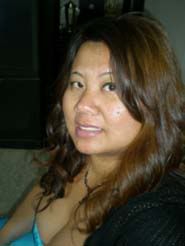Xiong revived a magazine called Hmoobteen for her project. Ambyr Pruitt.
Sophomore Sandy Xiong was recently named one of this year’s Phillips Scholarship recipients, making her the eleventh Gustavus student since 1998 to win the Scholarship.
Each year, six sophomore students from Minnesota’s private colleges are awarded the prestigious Phillips Scholarship. The scholarship is given to students who demonstrate a potential for leadership and plan to devote a portion of their lives to community service.
In order to be considered, Xiong and other applicants had to draft a proposal detailing a service project to be implemented over the summer. Xiong chose to revive a project she had previously worked on—a magazine titled Hmoobteen, which features writing submitted by Hmong teenagers.
While in high school, Xiong was a contributor and eventually an editor for the online magazine. Xiong says that writing for Hmoobteen gave her a valuable outlet for the stress of growing up torn between two cultures.
“I felt like I didn’t have anyone to talk to. I didn’t have an open resource. When I joined Hmoobteen, I felt like I could be myself,” Xiong said.
Xiong hopes to draw submissions from across the nation for the revamped magazine. She plans on incorporating social media into the magazine’s strategy to ensure its success beyond her involvement.
Nengher Vang, the Diversity Center’s Assistant Director of Multicultural Programs, points to the accessibility of Xiong’s project as one of its advantages. Vang was on the selection committee tasked with picking Gustavus’ semi-finalist.
“The committee was excited about her project. It was feasible and had sustainability to it,” Vang said.
Xiong feels that Hmong teenagers are in dire need of constructive outlets and sees this issue as a major contributor to juvenile delinquency.
“I think it’s a problem that a lot of Hmong teens don’t try to be applicable with their skills,” Xiong said.
Vang echoes this assessment. He agrees that Xiong’s project can help Hmong teenagers trying to cope with the challenge of finding an identity between cultures.
“I think Sandy is right in thinking about writing as a cathartic expression. When you don’t have any chance to express thoughts and feelings in the home, people can still express themselves through writing,” Vang said.
Professor Emeritus in Classics Patricia Freiert is equally impressed with Xiong’s project proposal. Xiong took Freiert’s FTS on bicultural identity.
“It was a very imaginative thing for her to do and speaks to her commitment to her traditions. I cannot imagine a student or project more appropriate,” Freiert said.
The Phillips Scholarship Program awards its recipients 6,000 dollars for their junior year, and an additional 6,000 dollars in scholarship money for their senior year. A stipend of 4,000 dollars is set aside to support the implementation of the summer service project, while 500 dollars goes into necessary project resources.
Prior to Xiong, Senior Irma Marquez was the most recent Gustavus student to win the scholarship. Marquez finds that the scholarship has a lasting impact.
“The experiences that I’ve had since I received the Phillips Scholarship have given me many opportunities to do the work I love and the work that I hope to continue doing in my future. I am extremely excited for Sandy,” Marquez said.
On campus, Xiong is involved with Gusties in Ongoing Leadership (G.O.L.D.), the Gustavian Weekly, the Writing Center, and is a Collegiate Fellow in Pittman Hall.
Read more...





